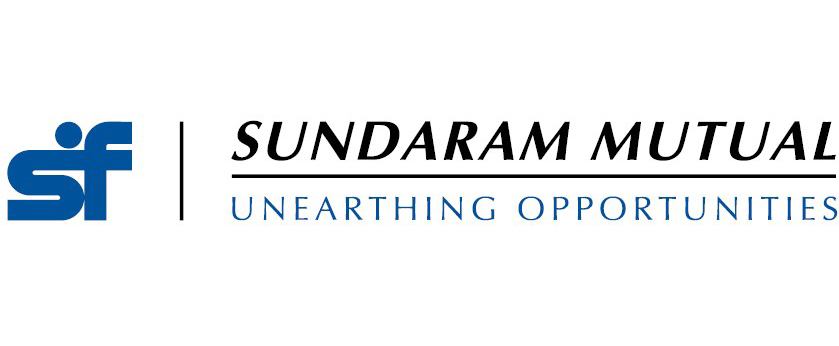Which return to use for selecting best mutual funds: Part 2

I remember a few scenes from an American romantic comedy series, where the actress is getting ready to go to a New Year’s party. She opens her cupboard; it is lined up with hundreds of shoes and she is totally confused which one to wear. After plenty of deliberations her companion helps her select a shoe. When they finally step outside, they cannot find a cab and the painful realization that she will have to walk a few blocks to get to the nearest metro (subway) station in her stiletto heels, dawns upon the heroine. The point is that having many options does not make the job of finding a solution any easier.
In the first part of this blog post, which return to use for selecting mutual funds – Part 1, we discussed that mutual fund research websites show many different types of mutual fund returns. The most common type of mutual fund return shown on research websites is trailing returns.
In our previous post, we discussed how mutual fund trailing returns should be used and its limitations. We also discussed how investors can use mutual fund point to point returns to evaluate scheme performance in different market conditions.
In this blog post, we will discuss some other returns measures for mutual funds, which can help investors make more informed and better investment decisions.
Annual returns
Annual return of mutual funds is one of the simplest return measures but it can be quite useful for investors who have knowledge of the stock market. Annual return, as the name suggests, is the return generated by a mutual fund scheme in a calendar year. It is calculated by taking the first and last NAVs of scheme for the year and calculates the NAV growth in percentage terms. In Advisorkhoj.com research, we show scheme annual returns versus the category average over the last 5 years. The chart below shows the 5 year annual returns of Sundaram Select Midcap Fund (you will find annual returns on the scheme page).

Source: Advisorkhoj Research
The mutual fund annual returns, unlike trailing returns, are not biased by current market conditions. These returns are based on scheme performance in each year and market conditions prevailing in the relevant years.
For example, in the chart above you can see that, Sundaram Select Midcap Fund gave very good returns in 2014. Readers who follow stock markets know that 2014 was a very good year for equity market and the fund was able to capture the market rally upside for investors. Now look at the 2015 annual returns. Some of our readers may recall that 2015 was a difficult year for the stock markets. In fact, the Nifty finished in red (loss) in that year, but the fund manager of Sundaram Select Midcap Fund was able to deliver double digit returns in that year.
Annual returns are essentially point to point returns (please see Part 1 of this post) with start of the year and end of the year as the two points. I personally, use annual returns a lot for my own mutual fund investment decisions because at one glance it tells me how the fund manager has done in different market conditions. Even if you prefer using trailing returns for your mutual fund investment decisions, you should also look at annual returns to see how the fund manager performed in different market conditions; it will give you a sense of how much risk the fund manager is taking to generate good returns. However, in order to use this return metric effectively, you need to have knowledge of how the overall stock market performed in different years.
Risk Adjusted Returns (Sharpe Ratio)
When making investments in stocks and mutual funds, two questions are uppermost in the minds of investors - how much return can I get from the investment and what is the risk of making a loss. However, when selecting mutual funds, investors and even financial advisors mostly look at funds which gave the highest returns. Market corrections and crashes, though undesirable, are inevitable and mutual fund schemes which take more risk are more affected in such situations. At the same, it is important to know that risk and return are related; you have to take more risk in order to get higher returns. But just because you take more risk, it does not automatically imply you will get better returns.
A good mutual fund manager can outperform his peers by taking the same amount of risk through superior stock selection. Risk adjusted returns is one of the most important performance parameters of a fund manager. Sharpe Ratio is a measure of a scheme’s risk adjusted returns developed by renowned Stanford University economist William Sharpe.
In order to calculate Sharpe Ratio of a mutual fund scheme we need to know three things – the return generated by the mutual fund scheme, the risk taken by the scheme and the risk free rate in the economy. The formula for Sharpe Ratio is:-

Volatility is the measure of risk and the quantitative measure of volatility is Standard Deviation. Some readers may find it slightly difficult to understand Standard Deviation as a concept and therefore we have excluded it from the scope of this post (readers interested in knowing more about standard deviation or volatility can refer to our post, Do you know the different performance parameters of equity mutual funds: Part 1).
Sharpe Ratio tells the investor how excess returns the scheme generated over risk free returns for the amount of the risk taken by the mutual fund scheme. Investors need not worry about calculating Sharpe Ratios because we have calculated Sharpe Ratio for all equity mutual funds in www.advisorkhoj.com. You will find it on the dedicated scheme pages, e.g. the Sharpe Ratio of Sundaram Select Midcap Fund on the dedicated page for the scheme. You can find Sharpe Ratio of mutual fund schemes on other research portals too.
A mutual fund scheme can generate very high returns but if it takes a lot of risk, its Sharpe Ratio will not be high. At the same time, a mutual fund scheme can take less risk and can deliver lesser returns than some of its peers, but if the return generated by the scheme is proportionately higher than the volatility (risk) on a relative basis, its Sharpe Ratio will be higher. Higher the Sharpe ratio better is the risk adjusted returns of the scheme.
Investors who use multiple mutual fund research portals may see different Sharpe Ratio numbers for the same scheme on different websites. This is because, while most of the portals may use the same Sharpe Ratio formula, there may be slight differences in methodology and assumptions, e.g. the period over which returns and volatility are calculated, assumptions of risk free rate etc. Use the research portal that you are comfortable with and compare Sharpe Ratios of different mutual fund schemes on the portal to evaluate relative risk adjusted performances.
Some investors have asked me, what is a good Sharpe Ratio? There is no perfect answer to this question because Sharpe Ratio of a scheme will depend on the market conditions. If the market is highly volatile, the Sharpe Ratio will be lower. But generally speaking, a Sharpe Ratio of more than 1 is usually considered to be good by investors; a Sharpe Ratio of more than 2 is quite rare in India and considered to be exceptionally good.
Please note we have italicized generally because a mutual fund scheme can give good returns in bull markets, even if the Sharpe Ratio is less than 1. So, if you see the Sharpe Ratio of your mutual fund scheme dropping below 1, do not panic and sell. Keep monitoring the Sharpe Ratio of your mutual fund schemes from time to time over a few years and if it is more than 1 on an average over a period of time, the performance of your scheme can be considered to be good.
The one limitation of Sharpe Ratio is that, while it is useful for comparison purposes, a ratio can be difficult to comprehend in practical terms by a layman investor; it does not give investors a sense of how much return a scheme generated or can be expected to generate in the future. Therefore, it will be useful for investors to use Sharpe Ratio along with other return methodologies like trailing returns, annual returns of mutual funds etc.
Conclusion
In the first part of this post we discussed about two important returns measures formutual funds, trailing returns and point to point returns. In this post, we discussed about mutual fund annual returns, a simple yet effective metric for evaluating performance, and risk adjusted returns or Sharpe Ratio.
We devoted most of the content to Sharpe Ratio because it factors in risk and is a very important performance parameter of a mutual fund manager. Is there a single mutual fund return measure which is better than the other types of returns which we have discussed thus far? Stay tuned to know that........
Mutual Fund Investments are subject to market risk, read all scheme related documents carefully.
RECOMMENDED READS
Sundaram Asset Management Company is the investment manager to Sundaram Mutual Fund. Founded 1996, Sundaram Mutual is a fully owned subsidiary of one of India's oldest NBFCs - Sundaram Finance Limited.
Quick Links
- Interview - Mr. Dwijendra Srivastava - CIO - Fixed Income
- Interview - Mr. Sunil Subramaniam - CEO
- Sundaram Select Midcap Fund: Consistent outperformance makes it a big wealth creator
- Interview - Mr. Sunil Subramaniam - CEO
- Fund Manager Interview - Mr. Krishna Kumar - CIO - Equities
- Sundaram Rural India Fund: This thematic Mutual Fund aiming good long term returns
- Sundaram Equity Multiplier: Long term wealth creation potential
- Our Articles
- Our Website
- SIP one sheeter-Investor Education initiative
- Sundaram Asset Management Singapore
- Returns Calculator
- SEBI Investor Awareness Initiative
- Check your KYC Status
- KYC Forms & FAQs
- Recieve your PIN
- A note on NIGO
- FAQs on RGESS
- FAQs on Direct Plan
- Receive Updates
- Share your views
- Transmission Checklist
- Equity Application Form
- Fixed Income Application Form
- Transaction Slip
- Factsheet May - 2016
- MF Tax Reckoner 2015
Follow Sundaram MF
More About Sundaram MF
POST A QUERY



